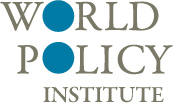Cogito Ergo Non Serviam
Covid Rescue Funds Won't be Inflationary Enough
The Biden administration is pushing forward with a $1.9 trillion rescue/stimulus package to help protect the economy from the worst ravages of the corona virus. It will probably not be enough to prevent homelessness on a large scale, nor will it get all the public schools retro-fitted for proper ventilation, nor will it prevent the social ills that follow widespread outbreaks of poverty. If the country is lucky, the money will keep things from getting much worse until the vaccinations allow for the economy to return to whatever normal will be. Yet some economists fear it will spark massive inflation as the world saw in the 1970s. That isn't going to happen. In fact, the package and the ensuing recovery will not be inflationary enough.
For most people, inflation is considered an unmitigated evil. Older people often bore their children and grandchildren with how much less everything cost in the good old days. Of course, that included their labor, so gasoline at 29 cents a gallon was not quite the bargain it sounds like. Grandpa wasn't making $50,000 a year. The stories of the German hyperinflation of the 1920s are often used to explain why the Nazis came to power; people had to take wheelbarrows of money to the bakery for a loaf of bread. That was truly bad (although it was over a decade before Hitler became chancellor so the causal effect is rather strained).
The world did have an inflation problem in the 1970s. The US dollar went off the gold standard, and losing that anchor resulted in some prices rising 20% or more a year depending on the item. Aggravating that was oil market disruption. OPEC embargoed the West for its support of Israel. Inflation was hardly a surprise, and the Fed hiked rates to squash it. The fact is that throughout the 1970s, inflation was only 6.8%; most of the truly awful price rises occurred in just a few quarters.
However, mild inflation (2-3% per year) is a positive for economic activity. If the dollar in the pocket is going to be 97 cents this time next year, there is a small incentive to spend it while it is still worth 100 pennies. For that reason, central banks have an inflation target. For the Fed, the European Central Bank and the Bank of Japan, that target is 2%.
Higher inflation will mean higher interest rates, which will make the debt markets more attractive. The fact is that the world's interests rates are just above zero, and in some places, negative rates exist. The inflation rate is nowhere near 2%. A $1.9 trillion spending bill in an economy of $21 trillion is not going to drive the inflation too far above 2% for very long if it does so at all. But some economists disagree.
"This would not be overheating; it would be starting a fire," tweeted Olivier Blanchard, formerly the chief economist of the International Monetary Fund. Lawrence Summers, a senior figure in each of the previous two Democratic administrations, warned in The Washington Post of "inflationary pressures of a kind we have not seen in a generation."
One can only hope so. Inflation is a beast the central banks know how to fight. Deflation remains a bigger risk, and given economic history, the central banks are less effective at fighting it. The risk of high inflation breaking out are slim.
Ideally, the package and the vaccines would get the prices to rise by 2-3% a year. That would allow interest rates to creep up to the 2% level. Perhaps, a savings account would start making financial sense again, and some of the money in the inflated stock market will flow into the credit markets where it will be better utilized.
This journal's real fear is that inflation will not arrive nor persist. Japan spend more than a lost decade fighting deflation with massive spending. The US need not suffer that fate, but the risk is much greater than the risk of using wheelbarrows full of cash to go shopping.
© Copyright 2021 by The Kensington Review, Jeff Myhre, PhD, Editor. No part of this publication may be reproduced without written consent. Produced using Ubuntu Linux.
Kensington Review Home

|
